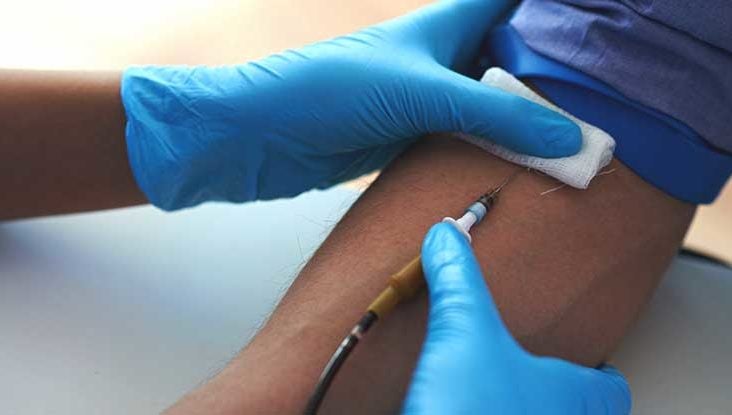Among the more common side effects following a donation of plasma include bruising and other discomfort which typically occur whenever a needle enters the skin. If you experience these symptoms while donating blood notify a donation center professional immediately.
 Donating Plasma What Are The Side Effects
Donating Plasma What Are The Side Effects
People may feel fatigued or experience some dizziness lightheadedness or nausea after donating blood.

Symptoms of giving plasma. The sight of blood or the collection needle pain from the needle insertion or anxiousness about the donation process can trigger this reaction. Other possible side effects include sweating and paleness weakness sudden warmness or nausea or vomiting. The Food and Drug Administration suggests waiting to donate blood for at least 14 days after a positive diagnostic test for COVID-19 without symptoms or for at least 14 days after symptoms of COVID-19 have completely cleared up.
The severity of symptoms also varies depending on their cause. More serious risks of donating plasma may be a drop in blood pressure which can result in light-headedness or fainting. Drink more non-alcoholic beverages for 24-48 hours after you donate blood.
To put that in perspective as a donor you can donate a max of 104 times a year. When you donate plasma. Presyncope symptoms include sweating nausea lightheadedness dizziness abdominal discomfort headache confusion heart palpitations and difficulty speaking.
Symptoms of dehydration include. This is because of the temporary lowering of blood pressure. At the point when the needle pierces the skin you may encounter a slight amount of blood on the surface of the skin.
Those who have tested positive for COIVD-19 antibodies but didnt have a diagnostic test and never developed symptoms can donate. Dizziness and blurred or tunnel vision may also occur. Side Effects After Donating Blood.
Bruising and inconvenience are among the milder and more normal symptoms of plasma donation. The signs and symptoms of a blood clot vary with the location of the clotwhether its in a vein or an arteryand its size. It is a common side effect since plasma contains a lot of water up to 92 percent by volume.
They only occurred at a rate of 2 per 10000 donations or 002. When you donate whole blood it goes straight into a collection bag and is later separated in a lab. Some people experience symptoms before they pass out.
Symptoms include a metallic taste and numbnesstingling in the lips toes or fingers. If a person feels faint they. They can include swelling skin tenderness and warmth and even chest pain shortness of breath and dizziness.
You may also encounter a dull pulling sensation at the needle site as blood is drawn from your vein into the tubing and afterwards into the machine gathering your plasma. Note if a bruise occurs while you are donating plasma most centers will halt the donation to keep it from getting worse. In most cases symptoms of bruising and discomfort after donating plasma should be mild and typically dissipate in.
However dehydration after donating plasma is usually not severe. There arent any lasting side effects but you may temporarily. Donating plasma is a little different from donating whole blood.
Early symptoms might include. Based on this study severe reactions were very rare. Plasma and other types of blood donation sometimes provoke an involuntary reflex call a vagovagal response which leads to a decrease in blood pressure.


